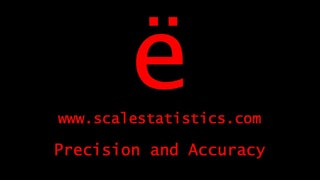Logarithmic transformations
Logarithmic transformations can normalize skewed or kurtotic data for purposes of analysis
Logarithmic transformations are used to "normalize" skewed or kurtotic distributions of continuous variables so that parametric statistics can be conducted. Essentially, all that researchers are doing with a logarithmic transformation is taking the natural log (ln) of each observation in the distribution. Non-normal distributions often have "outliers" or observations that are more than 3.29 standard deviations away from the mean. By transforming the distribution with a logarithmic transformations, these observations are "forced" closer to the mean and will generate a more normal distribution.
The means and standard deviations of these transformed variables cannot be interpreted in the traditional sense. Only the p-value yielded from the analysis can be interpreted. Medians and interquartile ranges for the respective distributions should be reported for descriptive purposes.
The means and standard deviations of these transformed variables cannot be interpreted in the traditional sense. Only the p-value yielded from the analysis can be interpreted. Medians and interquartile ranges for the respective distributions should be reported for descriptive purposes.
The steps for conducting logarithmic transformations in SPSS
1. Click Transform.
2. Click Compute Variable.
3. In the Target Variable: box, give the outcome a new name that reflects it has been transformed.
4. Click on the continuous outcome variable to highlight it.
5. Click on the arrow button to bring the variable over into Numeric Expression: box.
6. Type "ln" and put parentheses around the variable. Example: ln(outcome)
7. Click OK.
8. In the Data View tab of SPSS, there is a new transformed outcome variable.
2. Click Compute Variable.
3. In the Target Variable: box, give the outcome a new name that reflects it has been transformed.
4. Click on the continuous outcome variable to highlight it.
5. Click on the arrow button to bring the variable over into Numeric Expression: box.
6. Type "ln" and put parentheses around the variable. Example: ln(outcome)
7. Click OK.
8. In the Data View tab of SPSS, there is a new transformed outcome variable.
Hire A Statistician
DO YOU NEED TO HIRE A STATISTICIAN?
Eric Heidel, Ph.D., PStat will provide you with statistical consultation services for your research project at $100/hour. Secure checkout is available with Stripe, Venmo, Zelle, or PayPal.
- Statistical Analysis on any kind of project
- Dissertation and Thesis Projects
- DNP Capstone Projects
- Clinical Trials
- Analysis of Survey Data
